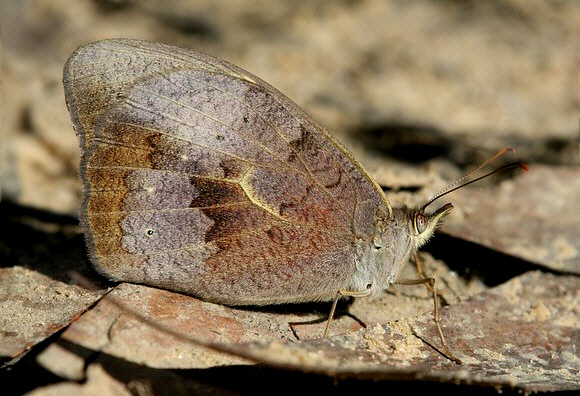
Introduction
The genus Heteronympha comprises of 8 species, all of which are endemic to Australia.
Heteronympha merope is the commonest and most widely distributed member of the genus, being found in Queensland, New South Wales, Victoria, South Australia, Western Australia and Tasmania.
Habitats
This species is found in grassland / woodland mosaics, scrubby grassland, forest clearings, gardens, parks and other open grassy habitats. It is commonest in hilly country between about 500-800m in altitude, but can be found anywhere from sea level to about 1500m.

Lifecycle
The eggs are ovoid, shiny, and cream in colour. The female does not settle to glue her eggs onto anything. Instead she drops them at random as she flies over grasses. She usually chooses areas close to trees, bushes or fences, presumably because these areas tend to escape the attention of grazing animals that would inadvertently devour the resulting larvae.
The larva lacks head horns. It can be either green or brown, with dark dorsal and lateral markings. It feeds at dusk and during the early evening on a range of grasses including Brachypodium, Poa, Cynodon, Ehrharta, Microlaena and Themeda ( Poaceae ).
The pupa is formed loose on the surface of the ground, often at the base of trees or bushes.
Adult behaviour
The flight is normally slow, but if the butterfly is alarmed it adopts a rapid, erratic, zigzag flight pattern that serves to confuse insectivorous birds.
The butterflies rest among dead leaf litter, and thermo-regulate by tilting their wings to maximise or minimise exposure to the sun, depending on ambient temperatures. In very hot weather they rest on shady overhanging banks, or sometimes in caves.
